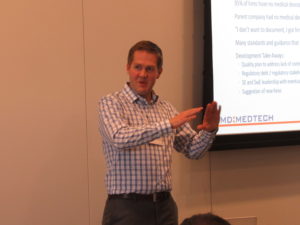One of systems engineering’s core functions is to understand the user needs for a product or service, and seamlessly translate those needs into design requirements. We’ve helped our medical device customers do this for many years. A complete set of user needs is worth its weight in gold, as it minimized surprises during validation which may include product redesign!
Recently, we’ve begun “practicing what we preach,” to better understand our customers needs. Once we have fully vetted our customers’ needs (overlaid with the business and employee needs), they can be translated into our product and service offerings with a sound justification. My favorite process is still “Voices into Choices: Acting on the Voice of the Customer.” I used this process back in my days at Covidien (now Medtronic). It’s out of print, but available used for a few bucks. We’ve just started defining our objective statement and identifying our matrix of customers. We’ve identified some unique areas of exploration, even before speaking with our first customer.
We wrote a paper on using Voice of the Customer in medical device development. Check it out here.
